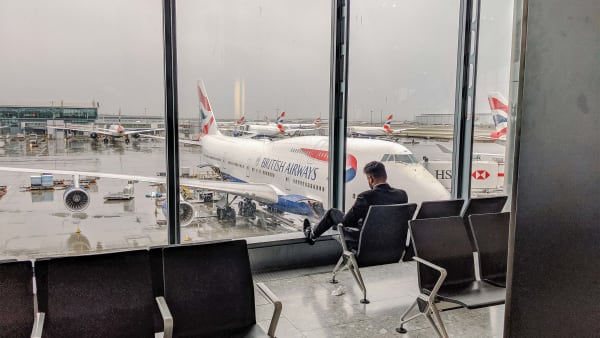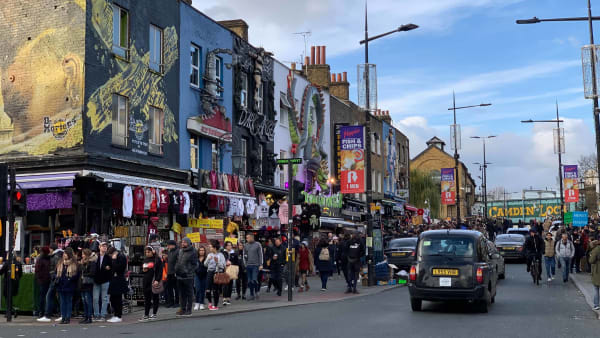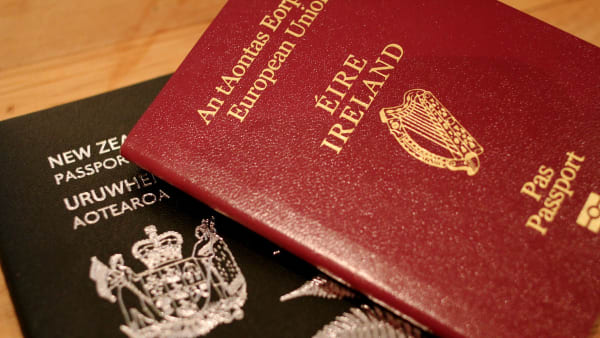History of London
Trace the passage of time in London and discover how the city became what it is today, which events shaped it and the landmarks you can visit today.
History of London
Trace the passage of time in London and discover how the city became what it is today, which events shaped it and the landmarks you can visit today.
Have you ever seen those old pictures and maps of a city that show you how a place looked like just 30, 50, 100 years ago? It’s always a shock to see how unrecognisable even a small neighbourhood becomes just by eliminating a few buildings and moving a couple of streets around.
Have you ever wondered, what would this city look like if history had just gone a little differently? And have you ever wondered when and how exactly a city came to look like it does? We can’t really show you how London evolved in more than two millennia here - that would be a very long slideshow of maps, renditions, paintings, illustrations, and photos.
What we can do, instead, is walk you through the most important and eventful periods of time in London. The ones that have impacted its layout, identity, and skyline forever. The ones that have left imprints that you can still see today.
Ancient Londinum
Recent discoveries indicate that early human presence in the London area can be dated as far back as 4500 BC. However, information about early, pre-Roman settlements is scarce.
London - then called Londinum - was founded by the Romans around 43 AD in a small area where the river Thames was narrow enough to bridge.
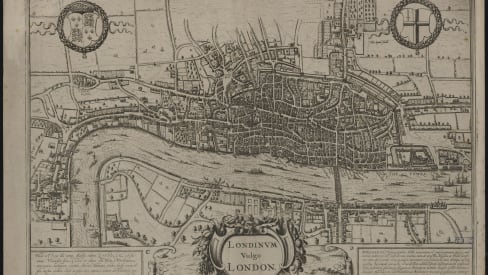
The London Wall, which would define the perimeter of the City of London for another 1,600 years, was built between the 2nd and 3rd centuries AD. You can still see a section of this wall by the Tower Hill gardens today.
By the 5th century, however, the Roman Empire was seeing its decline, and with the city’s occupation coming to an end in 410 AD, Londinum was pretty much abandoned. This left a great opportunity for the Anglo-Saxons to settle in the area in the following centuries.
Mediaeval London
After being occupied by the Vikings, London, at this point known as Lundenburh, returned to Anglo-Saxon hands thanks to King Alfred the Great’s forces in 886. During his reign, the Roman walls regained importance and the city was developed within their confines. Other fortified boroughs were also established nearby and the city attained commercial wealth and governmental importance.
After a few years under Danish power, English rule was restored in the city in 1042. It was at this time that Westminster developed as the centre of government. Westminster Abbey was founded there in the late 970s.
With the Norman conquest of England in 1066, London saw an increased construction of fortresses and other halls of power.

Among many, the most prominent of them were the Tower of London and Westminster Hall, which would later become the Palace of Westminster. London Bridge would also be built not much later, in 1176.
Throughout the Middle Ages, trade increased steadily, accompanied by demographic growth and of course, economic and political importance. London would soon become a major European hub for the distribution of goods.
English Reform
The Tudor dynasty had a profound influence on the geography and development of the city. With the 16th-century Reformation , Protestantism became the main national religion and London its early centre in the country.
The Dissolution of the Monasteries, brought on by Henry VIII, abolished almost all large monastic houses. Westminster Abbey narrowly escaped this fate, having recently been granted the status of cathedral, thus surviving until modern day.
Many of the city’s Royal Parks - including Hyde Park, Regent’s Park, and St James’s Park - were taken from the adjacent monasteries by Henry VIII himself, who established them as royal hunting grounds. They would all turn into public parks much later on, the majority of them in the 18th and 19th centuries.
Colonialism
Monopoly trading companies and other institutions that would become key to British colonialist, imperialist and mercantilist practices were also established in the 16th and 17th centuries. It was in this context that London rose to prominence as a European commercial centre.
The power, riches, and international leverage brought on by the brutal exploitation of overseas possessions would forever change the world, with London and England being one of the top beneficiaries of it. Many cultural-artistic objects and items today found in important institutions like the British Museum and the Victoria and Albert Museum, for example, were acquired during this and the following centuries through colonial pillage and looting.
Much about the maritime and slave trade and its impact on the city is explained at the Museum of London Docklands, so we recommend you check it out if you want to understand more about this.
The city’s wealth was also reflected in its rapid expansion. In less than one hundred years, between 1530 and 1605, the population in London had quadrupled. Although larger-scale urban planning had begun, the city’s urban area was still held inside the ancient Roman walls at this point.
It was also at this time that the dramatic arts flourished in the city, with prominent figures such as William Shakespeare producing and performing his plays in the city. Today, you can visit the reconstruction of his famous playhouse, Shakespeare’s Globe Theatre, in the Southwark district.
The Great Fire of London
Soon, the unsanitary and overcrowded conditions of the city caught up with it, and the numerous plague outbreaks culminated in what became to be known as the Great Plague of 1665, killing one fifth of London’s population.
This catastrophe was soon followed by another, the Great Fire of London, in 1666. The fire, still commemorated today by The Monument, destroyed the majority of the City (the part of London that was within the ancient walls).
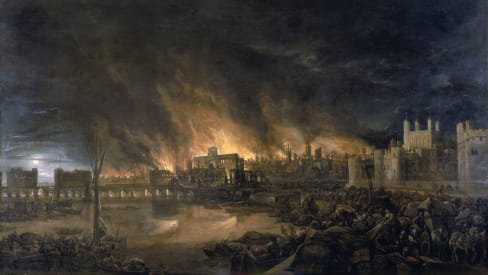
The great reconstruction effort that followed would shape the modern layout of the City of London for centuries to come. Palaces, churches, theatres, halls, and museums (both within the City and not) still famous today were built in this period. Among them are St Paul’s Cathedral, the British Museum (from which later derived the Natural History Museum), and Kensington Palace.
In the following decated and especially in the 18th century, the city spread out of its previous limits, with new districts, bridges, and port expansions. It was around this time that Buckingham Palace became a royal residence.
Victorian London
Much of the architecture that you can see today in London dates back to this period. This is due to the exponential growth in population spurred on by the industrial revolutions. The technological changes seen in the city are illustrated in one of the most interesting museums in London, the Science Museum.
Being one of the largest cities in the world and capital of the British Empire, by the end of the 19th century, London had become an international trade, finance, and political centre.
The first lines of the London Underground were built in the second half of the 19th century, along with many famous landmarks, including Big Ben and the new Westminster Palace, Tower Bridge, and the Victoria and Albert Museum.
20th century
The first half of the 20th century saw the two world wars greatly reshaping the city, mostly due to the damage being caused by aerial bombing.
Many London museums today are dedicated to the war efforts and the British military forces, including the Imperial War Museum, the Churchill War Rooms, and the HMS Belfast.

In the second half of the century, London became a centre for youth culture, gaining attention for both for its musicians and fashion. Some neighbourhoods in the city, like Camden Town and Shoreditch are still considered important cultural hubs today.
21st century
At the turn of the century, many Millennium projects were hosted in the city. The most well-known of these is probably the London Eye, also known as the Millennium Wheel.
Since then, many other iconic buildings and landmarks have been added to the London skyline, including The Shard and the Walkie-Talkie building - home to the Sky Garden.









